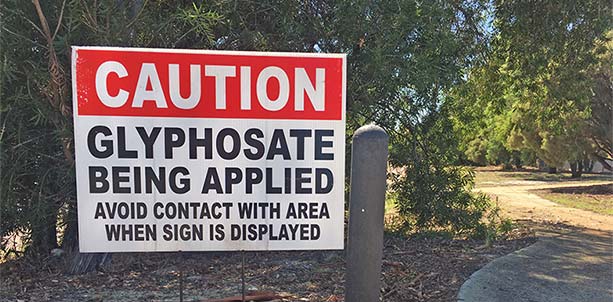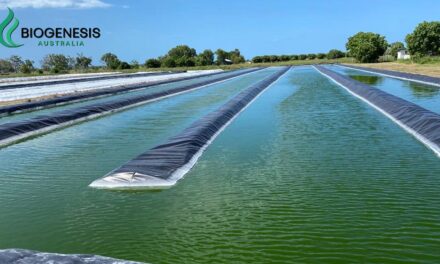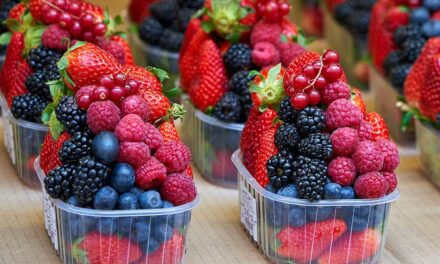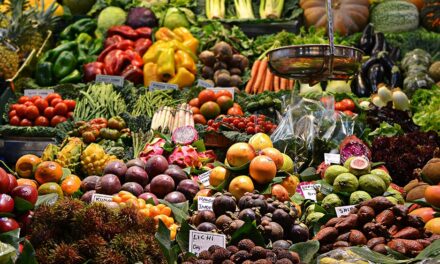We all love our superheroes. They perform amazing feats with their superhuman abilities. Superheroes reveal their many hidden gifts and talents and always fight on the side of justice, goodness, and protection of the innocent. When we are in the world of superheroes, we feel safer knowing that they will come to our rescue in time of need.
While superheroes exist in the human world, there are also superheroes that exist in the plant world that will also come to our rescue in time of need. One of the greatest superheroes is a humble, single-cell algae organism called Chlorella (C. vulgaris). Don’t be deceived by its very small size. In fact, Chlorella performs Herculean tasks that support our health and wellbeing as well as the health and wellbeing of our animals.
To begin with, Chlorella is nature’s own power-packed multivitamin, containing all the essential nutrients required to sustain life. Chlorella is rich in vitamins A (beta carotene), C, E, and vitamin K, containing all the B-complex vitamins (including B12), zinc, iron, calcium, magnesium, potassium, phosphorus, selenium, iodine, omega-3 essential fatty acid, and the enzyme pepsin. Chlorella also contains 58 to 70 percent of bio-available protein and all the essential amino acids. It is one of the few foods that naturally contain vitamin D. The iron content of chlorella is particularly impressive and can provide up to 40 percent of our daily requirements. Chlorella is also a rich source of the eye nutrients; carotenoids, lutein, and zeaxanthin.
But, perhaps, its greatest super hero feat is Chlorella’s unique ability to safely absorb and eliminate all the environmental toxins that we are exposed to every day. Very modest estimates have suggested that we are exposed to more than 700,000 different toxic chemicals daily. In addition, other nasty toxins such as mercury, lead, cadmium, and radiation find their way into our bodies through the air, food and water. It definitely takes a superhero to safely and efficiently detoxify so many toxic exposures every single day!
Glyphosate: A Super Villain to the Health of Humans, Animals and Nature

Glyphosate is the main ingredient in many weed-killer products. It is considered the most widely used broad-spectrum systemic herbicide in history. In the U.S., farmers use more than 200 million pounds of glyphosate annually. The chemical is also an active ingredient in more than 750 products approved for use, many of which can be found on supermarket and hardware store shelves and used by backyard gardeners.
herbicides
Exposure to glyphosate occurs either through environmental contamination or through genetically modified foods. Over 80 percent of genetically modified (GM) crops grown worldwide are engineered to tolerate being sprayed with high amounts of glyphosate herbicides. All non-organic cereals and grains, which are harvested with glyphosate, include wheat, barley, buckwheat, millet, rice, oats, rye, sorghum, wild rice, popcorn, and teff.
The Environmental Working Group found glyphosate in every sample of popular oat-based cereal and other oat-based food marketed to children. Glyphosate was also found in baby food. Even some organic foods have tested positive for glyphosate.
There is also a dirty little secret when it comes to the off-label use of glyphosate. It is used as a pre-harvest drying agent (desiccant) on non-GMO as well as organic crops. Glyphosate is regularly sprayed as a desiccant on more than 70 crops, including almonds, apples, dry edible beans, lentils, chickpeas, peas, grapes, rice, and sunflowers.
Many farmers also use it on fields before the growing season, including spinach growers and almond producers.
Exposure to glyphosate is everywhere. It is even found in tap water. People and animals that eat GM glyphosate-tolerant crops are eating potentially high levels of glyphosate residues. A recent report released by a unit of the Centers for Disease Control and Prevention (CDC) found that more than 80 percent of urine samples drawn from children and adults in the U.S. contained glyphosate.
While consumers have been repeatedly told that glyphosate is totally safe by the company and government regulators, the facts say otherwise. One of the big problems with glyphosate is that it impairs the physiology of humans. It is also interesting to note that glyphosate has been patented for use as an antibiotic. No wonder glyphosate has been a disaster to the human microbiome which contains trillions of bacteria playing crucial roles in maintaining our inner ecology.
Exposure to glyphosate presents many serious health risks including altered gastrointestinal function, immune disorders, infertility, accelerated aging, and insulin dysregulation. Since GMOs were introduced in 1996, the percentage of Americans with three or more chronic illnesses went from 7 percent to 13 percent and there has been an unprecedented rise in autism, food allergies, digestive disorders, and reproductive issues. In addition, GM foods are believed to be contributory to the epidemic of diabetes and obesity.
There is another serious concern from glyphosate exposure. It has been recognized as a carcinogen. The International Agency for Research on Cancer (IARC), which is part of the World Health Organization (WHO), and considered the foremost authority on cancer research, has classified glyphosate in Group 2A ‘probably carcinogenic to humans’ category.
Glyphosate also has many other undesirable impacts as well:
- Damages the mitochondria, the energy producers of the cells
- Promotes oxidative stress
- Disrupts hormone signaling
- Acts as an endocrine disruptor
- Chelates minerals, contributing to nutrient deficiencies
- Inhibits detoxification
- Adds to the total body burden of chemicals
- Destroy the tight junction of cells
Unfortunately, glyphosate exposure and GM ingredients and foods are ubiquitous in our daily life. It is safe to assume that most people have consumed glyphosate tainted foods or water. Finding a safe solution to eliminate this dangerous chemical from our body is essential for insuring our health and the health of future generations. This is when we are really in need of help from a superhero!
The Superhero Chlorella Can Save the Day
While studies have demonstrated that Chlorella can successful detoxify heavy metals such as mercury, cadmium, cadmium, titanium, lead and arsenic, we are shining the spotlight specifically on glyphosate since it so pervasive in our environment, food sources and our bodies. It is interesting to note that Chlorella is so intelligent that it only detoxifies the toxic metals from the body but not the beneficial minerals.
Chlorella has multiple mechanisms for doing its amazing job of cleansing and detoxifying the body. Biosorption is the ability to attach harmful chemicals to its surface and remove them out the body. Chlorella can bind or attach to herbicides and pesticides found in the gastrointestinal tract and assist in their elimination from the body instead of letting them linger in the body and cause damage to our health.
Bio-accumulation is another way involved in the detoxification of toxic chemicals using Chlorella. It is also almost like a biosorption mechanism. The good fat content of Chlorella accumulates toxic compounds such as pesticides as waste molecules and then removes them from the body.
Chlorella can bio-convert pesticides. This process converts harmful pesticides into less toxic, soluble, degradable, and hydrophilic compounds. This conversion prevents pesticides from causing harm to the body during their transient stay in the body before their elimination with Chlorella.
Chlorella also enhances liver function which is necessary to assist in detoxification. Chlorella can enhance phase 2 enzyme activation in the liver which is essential for eliminating toxic chemicals. Chlorella can also increase blood antioxidant levels and reduce oxidative damage in the body. The increase in antioxidant levels is essential to control the oxidative damage caused by glyphosate and other pesticides.
Chlorella enhances the natural detoxification process of pesticides and herbicides and protects our bodies from the harmful effects of these chemicals. Many foods are effective for giving the body its required nutrients but only a few are equally successful at removing the toxins as well. Chlorella is one of them. As a super hero, Chlorella is one of the best known biological detoxifiers found in nature.
The Secret to the Superpower of Chlorella
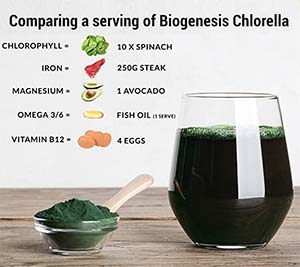 Now that you know the power of Chlorella to detoxify the body from all forms of toxins, especially glyphosate, it is essential to be sure to use only the best Chlorella product. Knowing the source of your products is always critical, especially with Chlorella. Only when Chlorella is grown in a pristine outdoor environment of clean air, soil, and water, is it able to ensure all of its powerful health benefits.
Now that you know the power of Chlorella to detoxify the body from all forms of toxins, especially glyphosate, it is essential to be sure to use only the best Chlorella product. Knowing the source of your products is always critical, especially with Chlorella. Only when Chlorella is grown in a pristine outdoor environment of clean air, soil, and water, is it able to ensure all of its powerful health benefits.
When choosing a Chlorella product be sure to source the Chlorella that is farmed in the purest environment, especially organic Chlorella that is free from herbicides, pesticides, and environmental contaminants. Research shows one of the best Chlorella products grown, is harvested and processed in Australia’s great barrier reef region in North Queensland. It is a FDA certified Bio-Secure region.
There is no doubt, Chlorella should be a part of everyone’s diet to support our wellbeing, detoxification, and healing. Modern technology has been able to unlock Chlorella’s phenomenal potential not only as a superfood but as super detoxifier We need such superheroes in our toxic and polluted world. Thank goodness that Chlorella has come to our rescue!
References:
- Gillezeau C, van Gerwen M, Shaffer RM, Rana I, Zhang L, Sheppard L, Taioli E. The evidence of human exposure to glyphosate: a review. Environ Health. 2019 Jan 7;18(1):2. doi: 10.1186/s12940-018-0435-5. PMID: 30612564; PMCID: PMC6322310.
- Australian Diet Study
- CDC – National Health and Nutrition Examination Survey
- Science in Society Archive – Glyphosate is Carcinogenic
- Stur E, Aristizabal-Pachon AF, Peronni KC, Agostini LP, Waigel S, Chariker J, et al. (2019) Glyphosate-based herbicides at low doses affect canonical pathways in estrogen positive and negative breast cancer cell lines. PLoS ONE 14(7): e0219610.
- Bill’s Organics – 10 Most Common GMO Foods
- Ferruzzi MG Digestion, absorption, and cancer preventative activity of dietary chlorophyll derivatives. Nutrition Research 2007
- Fahey JW, Stephenson KK, Dinkova-Kostova AT, Egner PA, Kensler TW, Talalay P. Chlorophyll, chlorophyllin and related tetrapyrroles are significant inducers of mammalian phase 2 cytoprotective genes. Carcinogenesis 2005;26:1247 – 55.

